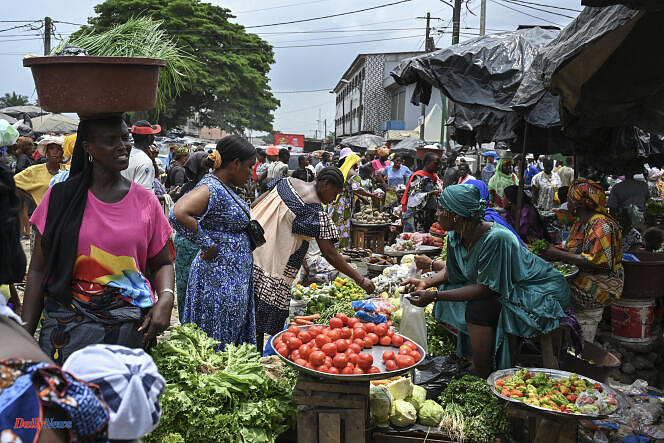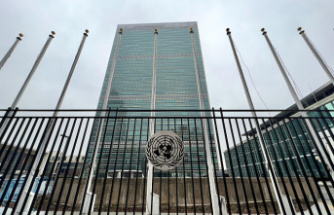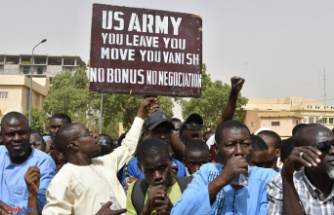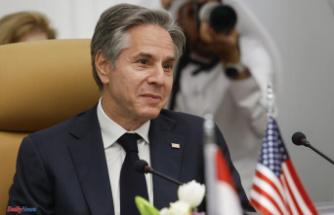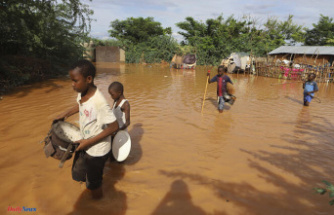A recovery, yes, but precarious. The diagnosis delivered Monday April 8 by the World Bank on growth prospects in sub-Saharan Africa struggles to fuel optimism, despite the announcement of a restart of economic activity after the consecutive shocks of the Covid-19 pandemic, the war in Ukraine and soaring global interest rates. The region's gross domestic product is expected to grow by 3.4% in 2024, compared to just 2.6% in 2023.
“After four years of facing crises, this recovery is welcome,” the World Bank’s chief economist for Africa, Andrew Dabalen, tells Le Monde. However, he immediately qualifies, “this remains very fragile because the drivers of growth are weak and uncertain”.
The recovery is mainly supported by a reduction in inflationary pressures. Although a dozen countries continue to record double-digit price increases, such as Nigeria (31.7% in February) or Ghana (23%), the trend is slowing in most African economies. Enough to relieve households, whose income had been decimated by the surge in food prices.
But this good news hardly manages to compensate for the amount of unknowns and risks weighing on the trajectory of the continent. Outside, China’s “softness” worries. Africa's main trading partner, essential buyer of its raw materials and leading bilateral creditor of a handful of countries, the Asian giant is struggling with weakening growth, rising unemployment and the threat of a real estate crisis. A complex equation which is already resulting in a dizzying fall in loans granted to sub-Saharan economies.
Countries returning to financial markets
This contraction is a challenge for the continent which has been struggling, for months, to find sources of financing. Foreign direct investments are declining, development aid is stagnating and financial markets have become very difficult to access for African states issuing Eurobonds, these bonds denominated in a currency different from that of the country.
“More than half of African governments are struggling with external liquidity problems,” the World Bank report highlights. The risk of over-indebtedness thus remains pressing for a majority of countries south of the Sahara. In 2023, governments in the region spent more than 45% of their revenue on debt repayments, up from 31% in 2022. And three countries – Zambia, Ghana and Ethiopia – have already defaulted since the pandemic .
An improvement still seemed to be on the horizon with the consecutive return, since the end of January, of Ivory Coast, Benin and Kenya to the financial markets. No African country has risked borrowing there since spring 2022. “It’s a good sign, it means that the door is reopening for Africa,” notes Mr. Dabalen. But this currently only concerns a very small number of countries in the region and the price to pay for this is very high. »
In fact, as a March 27 study from the Center for Global Development, a Washington think tank, points out, investors demand a “considerable premium” to buy African debt. Kenya, in particular, has been raising money at a prohibitive 9.75%, squeezed by the upcoming maturity of a Eurobond taken out a decade ago.
Discouraged investors
It remains to be hoped, for the region, that global inflation will continue to subside. The central banks of developed countries should then lower their interest rates, which could result in more easing on the financial markets.
But this improvement is still only a gamble because geopolitical tensions remain high in many parts of the globe, from the war in Ukraine to the conflict in Gaza, including attacks by Houthi rebels in the Red Sea. So much friction could once again disrupt global supply chains.
Sub-Saharan Africa itself is far from being spared from unrest: increasing number of coups d'état in West Africa, violence and insecurity from the Sahel to Ethiopia, civil war in Sudan, incessant conflicts in east of the Democratic Republic of Congo… This bleak picture discourages investors, increases the risks of a food crisis and fuels vulnerabilities.
However, the World Bank points out that the fight against poverty seems compromised as the rate of economic expansion remains “slow and insufficient”. When it comes to growth, fortunes vary from one end of the continent to the other. Some countries show robust prospects, such as Ivory Coast, Kenya or Rwanda. But, on average, “growth in the region remains too weak and unstable and does not allow for a significant reduction in poverty,” regrets Andrew Dabalen.
Global turbulence is to blame: according to preliminary statistics, Covid-19, the war in Ukraine and climate shocks have pushed an additional 17 million people into extreme precariousness in Africa. But the lack of diversification of economies, their volatility, their inability to create jobs in quantity and quality, and the high level of structural inequalities are at least as important factors, underlines the World Bank.
“Incomes per capita have already stagnated over the last ten years,” recalls Mr. Dabalen. Without decisive action to establish a new growth model that is stronger, more inclusive and more job-rich, sub-Saharan Africa risks experiencing another lost decade. »

